Arun Venkatesh Ramesh
Spatio-Temporal Deep Learning-Assisted Reduced Security-Constrained Unit Commitment
Jun 02, 2023Abstract:Security-constrained unit commitment (SCUC) is a computationally complex process utilized in power system day-ahead scheduling and market clearing. SCUC is run daily and requires state-of-the-art algorithms to speed up the process. The constraints and data associated with SCUC are both geographically and temporally correlated to ensure the reliability of the solution, which further increases the complexity. In this paper, an advanced machine learning (ML) model is used to study the patterns in power system historical data, which inherently considers both spatial and temporal (ST) correlations in constraints. The ST-correlated ML model is trained to understand spatial correlation by considering graph neural networks (GNN) whereas temporal sequences are studied using long short-term memory (LSTM) networks. The proposed approach is validated on several test systems namely, IEEE 24-Bus system, IEEE-73 Bus system, IEEE 118-Bus system, and synthetic South-Carolina (SC) 500-Bus system. Moreover, B-{\theta} and power transfer distribution factor (PTDF) based SCUC formulations were considered in this research. Simulation results demonstrate that the ST approach can effectively predict generator commitment schedule and classify critical and non-critical lines in the system which are utilized for model reduction of SCUC to obtain computational enhancement without loss in solution quality
Feasibility Layer Aided Machine Learning Approach for Day-Ahead Operations
Aug 13, 2022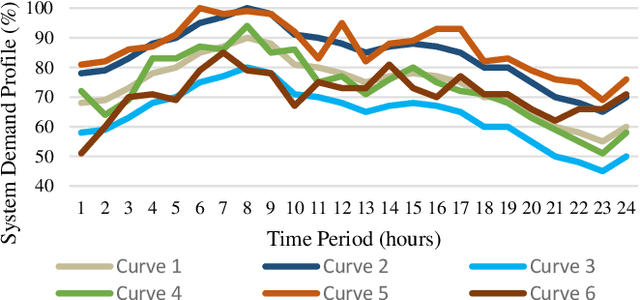
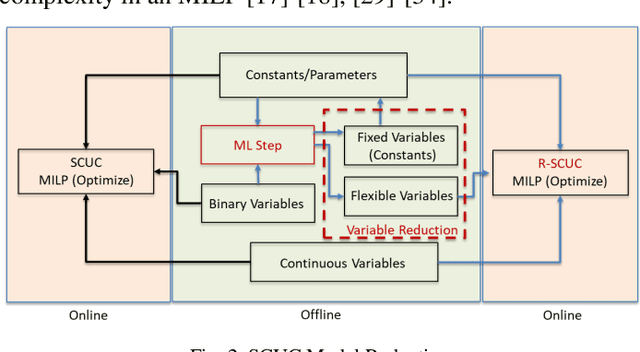

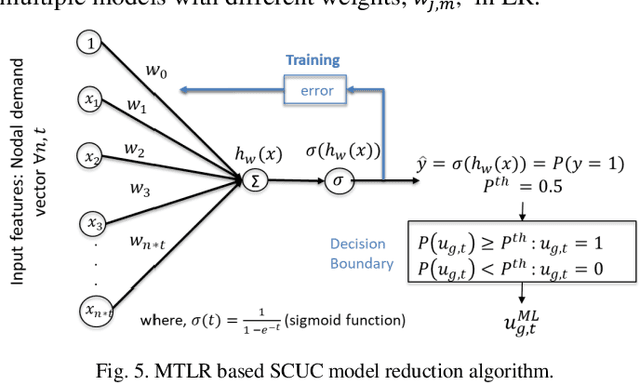
Abstract:Day-ahead operations involves a complex and computationally intensive optimization process to determine the generator commitment schedule and dispatch. The optimization process is a mixed-integer linear program (MILP) also known as security-constrained unit commitment (SCUC). Independent system operators (ISOs) run SCUC daily and require state-of-the-art algorithms to speed up the process. Existing patterns in historical information can be leveraged for model reduction of SCUC, which can provide significant time savings. In this paper, machine learning (ML) based classification approaches, namely logistic regression, neural networks, random forest and K-nearest neighbor, were studied for model reduction of SCUC. The ML was then aided with a feasibility layer (FL) and post-process technique to ensure high-quality solutions. The proposed approach is validated on several test systems namely, IEEE 24-Bus system, IEEE-73 Bus system, IEEE 118-Bus system, 500-Bus system, and Polish 2383-Bus system. Moreover, model reduction of a stochastic SCUC (SSCUC) was demonstrated utilizing a modified IEEE 24-Bus system with renewable generation. Simulation results demonstrate a high training accuracy to identify commitment schedule while FL and post-process ensure ML predictions do not lead to infeasible solutions with minimal loss in solution quality.
Machine Learning Assisted Approach for Security-Constrained Unit Commitment
Nov 17, 2021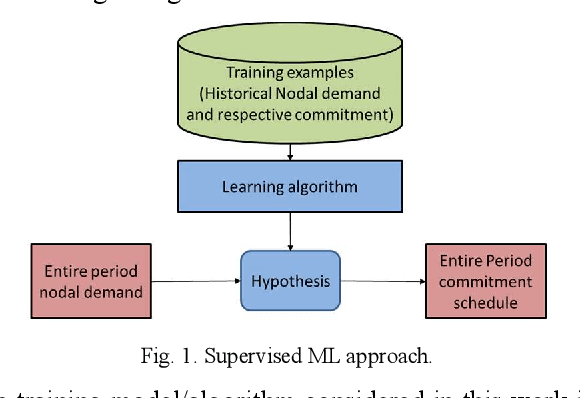
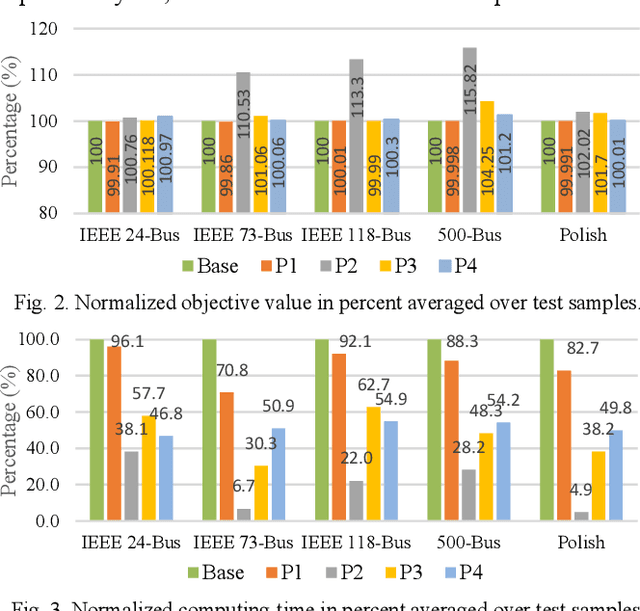
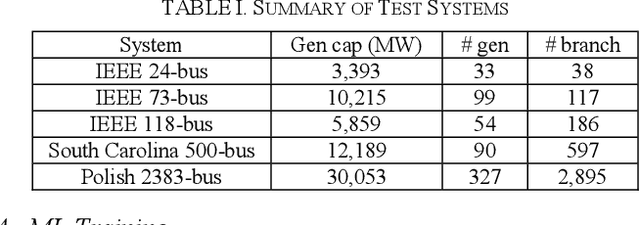

Abstract:Security-constrained unit commitment (SCUC) which is used in the power system day-ahead generation scheduling is a mixed-integer linear programming problem that is computationally intensive. A good warm-start solution or a reduced-SCUC model can bring significant time savings. In this work, a novel approach is proposed to effectively utilize machine learning (ML) to provide a good starting solution and/or reduce the problem size of SCUC. An ML model using a logistic regression algorithm is proposed and trained using historical nodal demand profiles and the respective commitment schedules. The ML outputs are processed and analyzed to assist SCUC. The proposed approach is validated on several standard test systems namely, IEEE 24-bus system, IEEE 73-bus system, IEEE 118-bus system, synthetic South Carolina 500-bus system, and Polish 2383-bus system. Simulation results demonstrate that the prediction from the proposed machine learning model can provide a good warm-start solution and/or reduce the number of variables and constraints in SCUC with minimal loss in solution quality while substantially reducing the computing time.
 Add to Chrome
Add to Chrome Add to Firefox
Add to Firefox Add to Edge
Add to Edge